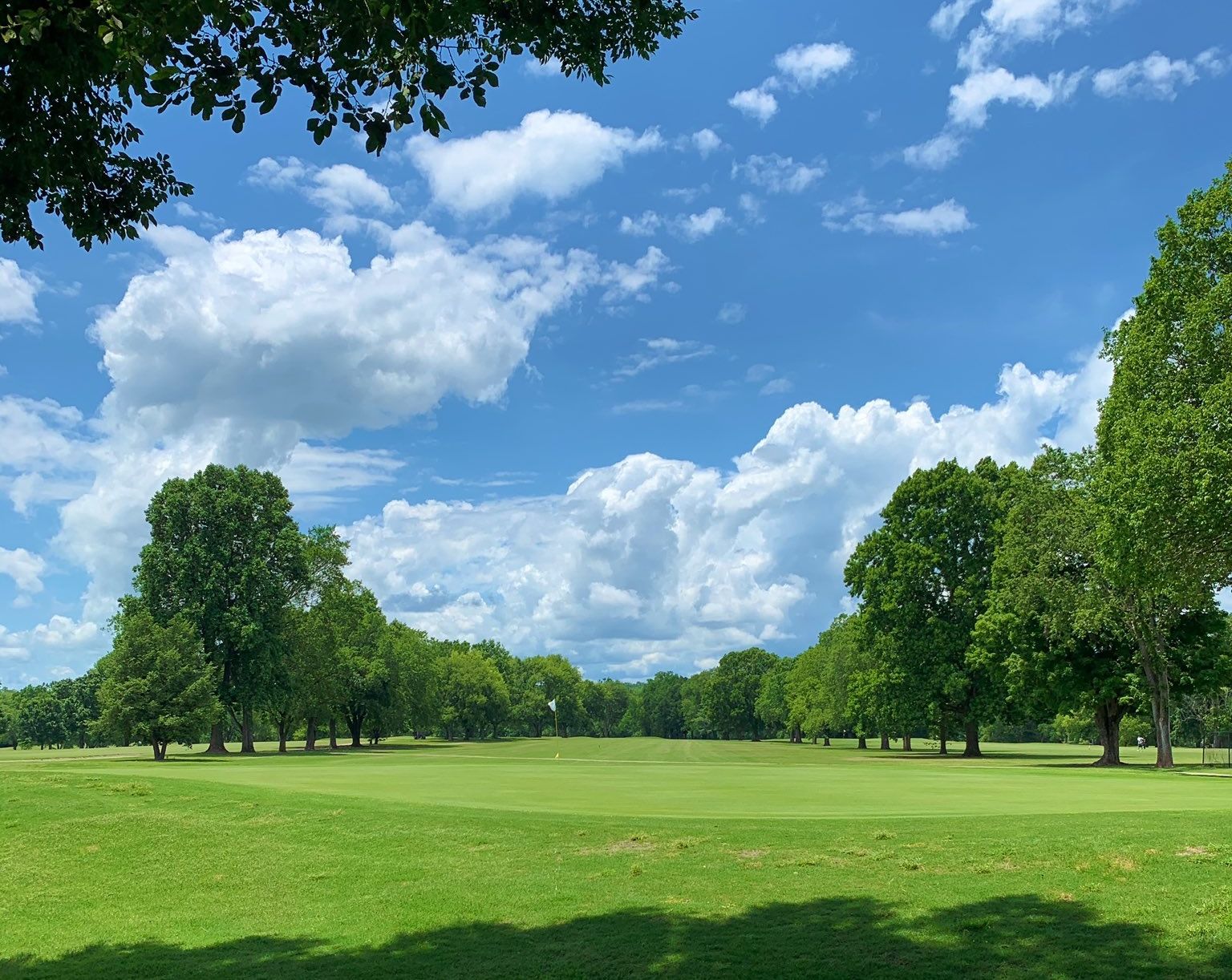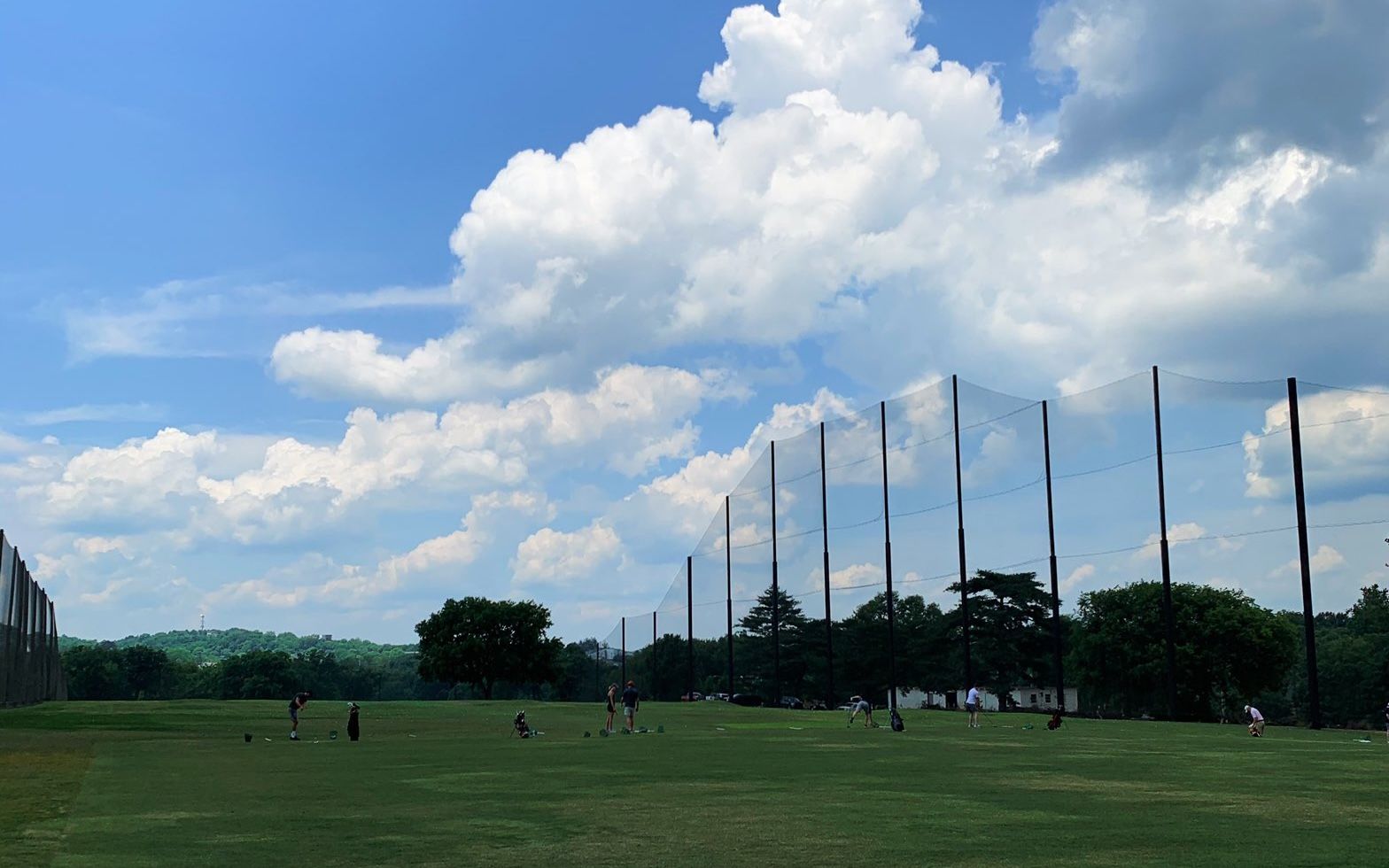
Review: McCabe Golf Course
Porter plays a round at Nashville's most popular public course
In Sylvan Park, on the site of the former McConnell Field, Nashville’s first municipal airport, sits McCabe Golf Course. Named after former parks commissioner Charles McCabe, it is easily the most profitable municipal course, and thus, a fitting place to start. A 27-hole parkland design consistently voted as the best place in Metro to play, we’ll be playing the Middle and North courses today.
After the tremendous success of Shelby Golf Course in the 1930s, demand from the public spurred the city’s Parks Board to plan another public course. Construction of the McCabe Golf Club began in 1939 through FDR’s Works Progress Administration, under the direction of Parks Commissioner Edwin Warner and the head pro at Shelby Golf Club, C.E. Danis (who would later go on to become supervisor of the entire municipal golf system). With further assistance from Hershel “Hut” Eaton, the course opened to the public in 1942, making it the third oldest operating muni in Metro Nashville. The nine-hole South course was added in 1947 and given an update in 2006.
The course has hosted the annual Capital City Golf Classic since 1960, which brought out the best club pros in the mid-state and beyond while attracting celebrities like Mickey Mantle and pro wrestling legend Jackie Fargo. The clubhouse, built in 1999 after the original was damaged by fire, is the small side, but has a cozy cottage-like fee with a vaulted ceiling and fireplace. The first thing that greets you on the way in is a nice display of historical memorabilia, mostly related to the CGA and a handful of greats who have come through and won.
Arriving for our tee time at 8:00 am, the kitchen was buzzing. I picked up some real good sausage biscuits and coffee. The weekday greens fee for 18 holes is $26 with a $12 cart charge that puts McCabe on the most affordable end for a round of golf in Middle Tennessee. For the increased weekend rate, you’re looking at a full round of golf under $50.
PUTT AND CHIP
With about an hour before our round started, I checked out the practice area. McCabe sets itself apart from the other city courses here by having a large chipping and putting area. The fine white silica sand in the bunker is great for hitting an aggressive spinny shot. Usually, you will not see this type of sand at a muni, or even lower-end semi-private courses that use cheap, rough clumpy, play sand. Lies were very tight this day as Bermuda grass stays dormant until we start to get a lot of rain and ground temperatures reach about 65 degrees.
About 2,000 sqft. of putting green accommodates players who want to get the speed right before heading out. There wasn’t a blemish out here. No dead spots or mold at all, and that’s saying something with all the shade and foliage from nearby trees. Speed was between slow and medium — although once summer is in full bloom, the crews will be able to cut and roll them tighter for faster putts.
As is customary with all Nashville Fairways sites, there are no cut holes on the practice green; the flag rests on a peg inserted into the ground. Personally, I prefer this for two reasons. First, you avoid damaging the grass by cutting new holes while moving the pins around. Second, it’s a bit of a challenge hitting those small pegs. During my days at the TN PGA Junior Golf Academy, we did a drill where you put a quarter on the ground and putted at it. If you can hit the coin, a full-size hole is no problem.
DRIVING RANGE

Moving over to the driving range, we have a nice, large hitting area with dozens of turf bays and flags at 100, 150, and 200 yards. This is a full-service range. Feel free to let the big dog eat out here. It’s plenty long too.
THE MIDDLE COURSE
Holes 1-3 Starting off on the Middle course the first three holes provide some easy scoring opportunities right out the gate. A 350-yard Par 4 starts you out with beautiful Sycamore trees down the right side; number two, a straightforward 155-yard par 3 with bunkers on the backside of the green; and number three, a longer, downhill, 440-yard par 4 with a large green to work with. I like the idea of offering a player a chance to build confidence before they hit the meat grinder holes.
Holes 4-6 Holes four, five, and six include similarly long par 4s and one par 5, all blanketed tight on each side by more trees. This is the first challenge you run into out here. Keep your drive down the narrow middle, and you’ll be fine. However, clip one of these branches, and you have a long approach shot to figure out.
Holes 7-9 The last three include two short par 4s and a medium-length par 3 that bring you right back to the clubhouse
THE NORTH COURSE
Hole 1 The North Course starts behind the driving range with a deceptively long and tricky par 4. I caught a pretty good drive and ended up with a short wedge shot onto the green.
Hole 2 Number two is a drivable par 4 with a big green — just make sure no one is still on the hole when you tee off, as the left side is completely blind due to some hills (almost bombarded some senior citizens).
Holes 3 & 4 Next up is number three, a short par 3; followed by number four, a 500-yard par 5 which takes you over a creek. Most big hitters will have no problem clearing the hazard, just watch out for the bunker on the left side.
Holes 5-7 After number five, a 170-yard par 3, it’s time to face the two hardest holes out here: six and seven. These two holes are long.
Number six is a 450-yard par 4 with trees down the right side. Faders and slicers beware. An average-length drive will still leave you around 190 yards short of the green. I recommend going a club up from normal off the tee — a three hybrid or even three wood from there if you’re a shorter hitter — and attacking the green. If you miss, you’ll be chipping on instead of ending up 50 yards short.
Number seven is the kind of hole that gives me, a left-handed fade hitter, problems every time. With a hard dogleg right, OB down the left side of the Richland Creek greenway, and trees lining the right side, I was pretty much forced to hit a low, sharp draw to have any chance of reaching the green in two. You right-handed slicer bubs can swing away. This is your time to shine.
Holes 8 & 9 Finishing up, we've got an easy par 3 leading into the final hole, and a personal favorite: number nine, a 360-yard par 4 over a creek gulley with strategically placed fairway bunkers about 250 yards out. I only have two options here: aim at the left bunker and draw it into the fairway, or take it over the left tree down into the flat bottom for a straight uphill approach shot.
The pin was in a friendly position today, right in the middle of the green. Surrounded on all sides by deep high bank bunkers, the prudent shot here is to go for the middle where you’ll end up with a pretty straight putt from all angles.
At 6,100 yards with an average slope rating, this is not a very difficult course. Scratch golfers will probably feel unchallenged playing here, but come August when all these trees are full in bloom, placing the ball will be of the utmost importance.
One downside: there is clearly no way for the crews to expand the tee boxes further, so McCabe will always be a short course. But with the new, rolled-back golf ball distances taking effect in 2028, a place like this could make a comeback in serious amateur tournament play. But for now, anyone in Nashville looking for a beginner-friendly, affordable place to learn the game on the West side, this is it.

